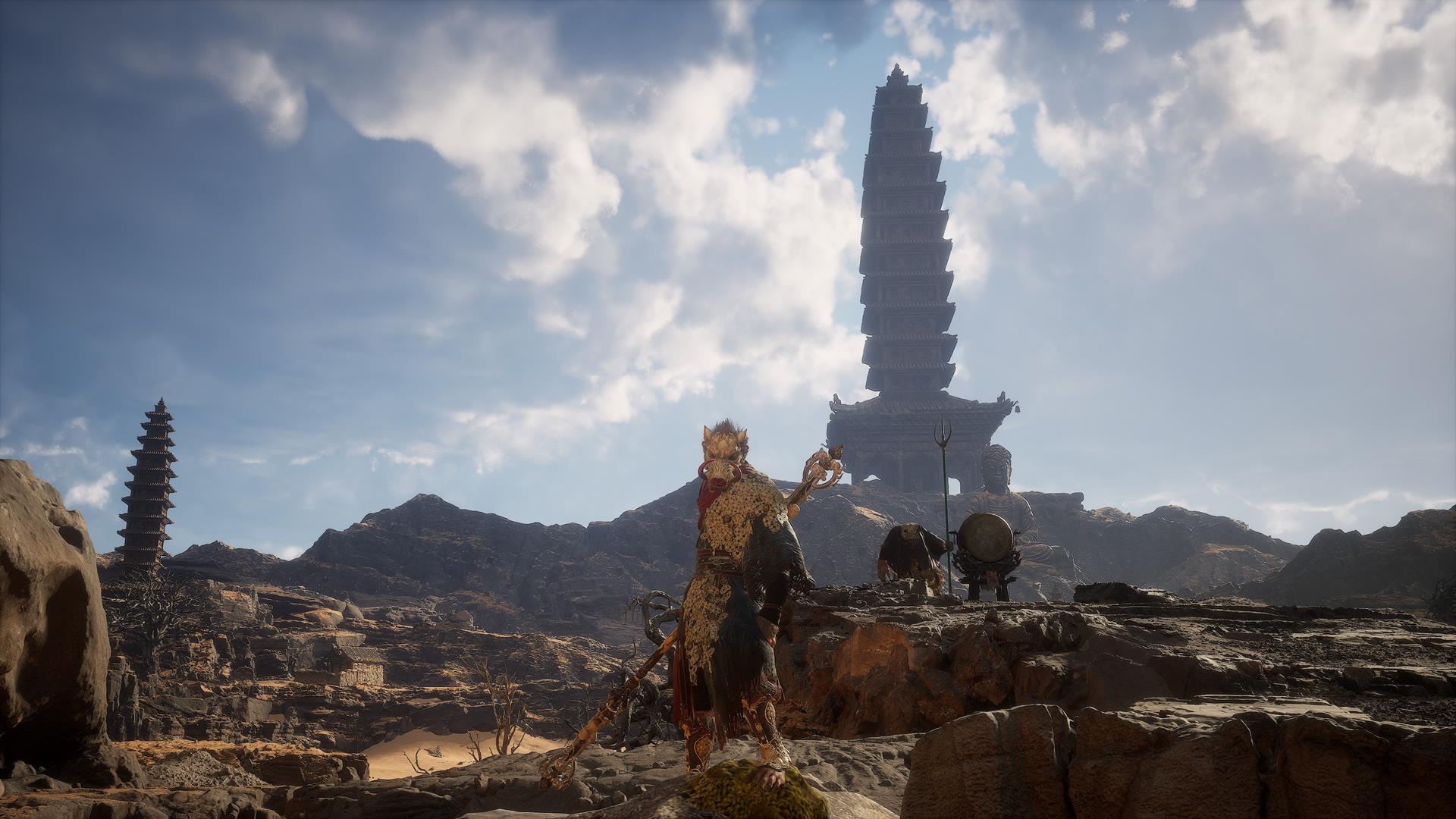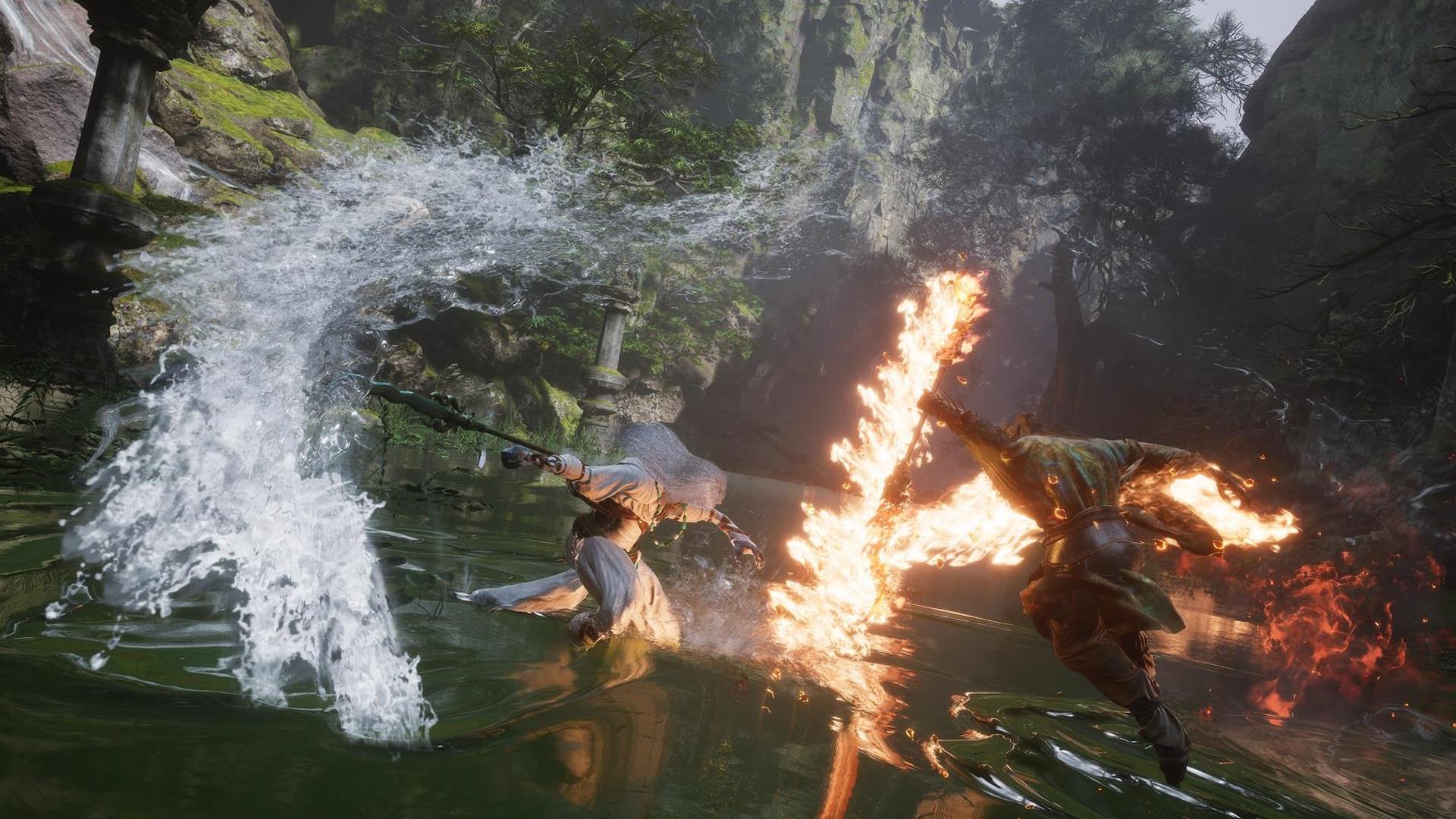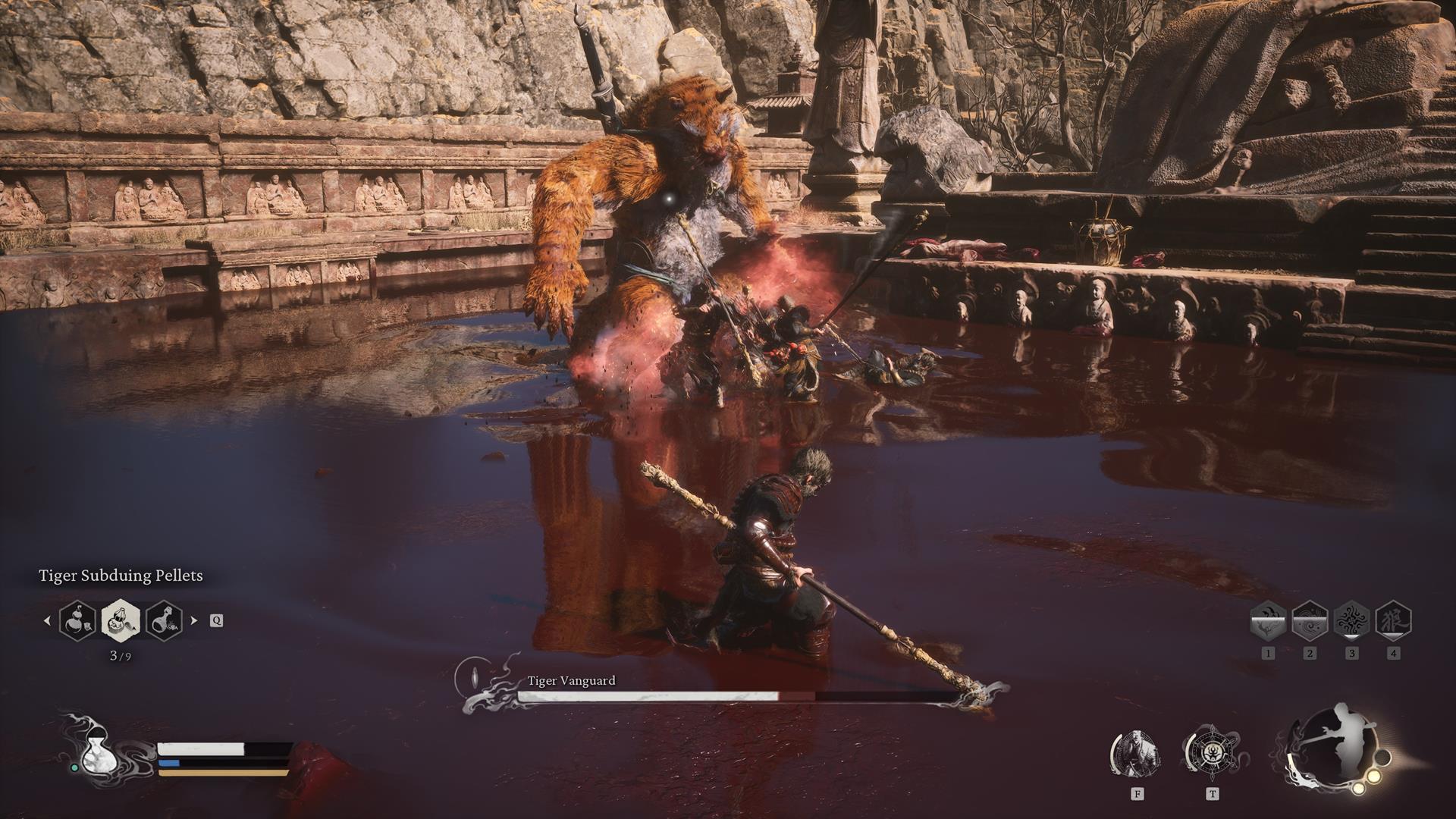Black Myth: Wukong is both astonishing and spectacular to behold
There was a moment, about 20 hours into my nearly 40 hour play session of Black Myth: Wukongwhen things finally clicked. A few chapters earlier had left me scratching my head, bewildered by the introduction of various supporting characters, antagonists, and concepts. But at that point halfway through, when things finally made sense, I couldn’t help but smile. I was hooked, and there was no turning back.
Black Myth: Wukongcreated by China-based studio Game Science, is an action role-playing game inspired by Journey to the West. It, together with Romance of the Three Kingdoms, Water’s edgeAnd Dream of the Red Roomis one of the great pillars of Chinese literature. To tell the story of Journey to the Westa timeless classic with characters and themes that have remained influential throughout East Asia is a daunting task in itself. Fortunately, Game Science has managed to do the impossible, weaving a story that is intricate, original, and at times thought-provoking.
The hardest part about writing this review is Black Myth: Wukong is that the review embargo means we can’t divulge too many details about the game’s plot beyond a few chapters. Suffice it to say, you play as the Destined One, a monkey warrior tasked with recovering lost relics. You’ll embark on your own odyssey — maybe not “to the West,” but through six chapters of action and world-building.
As a Filipino, I consider myself more of a Romance of the Three Kingdoms buff, although I read briefly Journey to the West centuries ago during my high school years. Still, I appreciated the novel’s inclusion of numerous characters and plot points in the campaign, as well as Buddhist teachings and Taoist philosophy. These are either shown in detail, relayed in poems, or mentioned in passing, some of which made me think, “I understood that reference.”
The story also touches on the backstory of a particular companion, which I won’t spoil here. The story explores themes of lifelong regret, sacrifice, the immutable shaping of one’s fate, and the idea that everyone, heroes and villains alike, might just be looking for redemption or a place in the sun. The entire arc of the campaign, steeped in Chinese and broader Asian cultural traditions, is woven like a fine tapestry and is further complemented by beautiful images and scenes that left me in awe.
Similar to Journey to the Westmy adventure in Black Myth: Wukong took me to different regions. From lush forests and sand-swept deserts to snow-capped fields and magma mountains, each environment felt intricately crafted, as if it had been ripped from the pages of a novel and brought to life. These biomes are divided into multiple areas; the game is not open world, though there are some large sections with multiple branching paths leading to more enemies and rewards.
For example, one chapter took place in a hollowed-out underground cavern crawling with spiders, centipedes, and all manner of multi-legged creatures. I followed a winding path that led me to several large bosses. I then fast-traveled to a previously visited shrine and took another exit. Eventually, I came across a number of optional bosses, including a scorpion monk who had escaped into another part of the cave system. These paths also had some useful HP, mana, and flask upgrades, as well as quiet meditation spots. And these are just the starting zone in this particular chapter; the second half takes place in a temple complex on a mountain! The sheer size of each level made them all daunting and utterly stunning in equal measure.
There are also plenty of side quests and secrets. In the first level, for example, I rang shrine bells, which teleported me to a hidden temple. In the desert biome, meanwhile, I collected eyes from Buddha statues. I also helped break the curse of a man trapped in stone, who then sold important items. Later, I tackled objectives to unlock a hub, which allowed vendor NPCs to move into my humble abode. Completing these activities, some of which involved solving cryptic riddles, was a satisfying experience.
Surprisingly, there is no map at all, and I admit I got lost several times. But learning from the adventures of Journey to the West‘s Tang Sanzang, Sun Wukong, Zhu Baije and company, I embraced the idea of exploration, investigating mysterious locations and facing all manner of dangers. With no enforcement whatsoever, I was free to explore to my heart’s content — which of course made discoveries all the more rewarding.
Enemy design in Black Myth: Wukong is also nothing short of excellent, with the game featuring numerous varieties of enemies, known as yaoguai, and nearly 80 bosses to encounter on your travels. You have everything from masked monks and anthropomorphic creatures such as zodiac animals to celestial beings, giant goliaths, lumbering undead wielding various weapons, and even a large dragon that flies around striking you with lightning.
Some of the enemies are surprisingly macabre in nature, almost with a hint of dark fantasy, including two-headed priests who cause madness, ogres who carry the skeletal remains of their beloved, deformed entities in the grip of corruption, and an angelic general with a hand for a head. It’s not just the sheer epicness of these battles that makes them memorable, but the way the game’s designers have lovingly crafted the characters and creatures in homage to the legendary story and regional folklore.
The number of bosses in the game made for a challenging journey, as each opponent had their own movesets and abilities that I had to pay attention to. Luckily, Black Myth: Wukong more than holds its own in terms of action, thanks to fast-paced combat, fluid animations, responsive controls, and a plethora of moves at my disposal.
As the Destined One, I used a variety of magic spells, such as turning into a mist decoy, immobilizing an enemy, and summoning multiple duplicates of myself. There are also numerous transformations, akin to Sun Wukong’s powers. Spirit forms briefly transform you into an elite enemy you defeated to cast their spell, somewhat akin to Castlevania: Aria of Sorrow. The actual transformations, meanwhile, see you shapeshift into larger creatures with their own health bars and unique movesets. My favorite has to be the Yin Tiger, which allowed me to deflect incoming blows before countering with a devastating blow with my Buster Sword-esque blade.
As for general melee combat, Black Myth: Wukong lets you wield only one type of weapon: a staff with three combat stances. While this concept is understandable to a monkey warrior, it unfortunately results in monotonous gameplay as time goes on. At best, each stance’s charged attacks and mixed combos are different, but regular bursts of attacks are the same. By the time I finally unlocked the defensive-opponent Thrust Stance at level 20, which had a backstep move to avoid hits, I barely used the others.
Related to the above, while there are dozens of enemy forms you can transform into, they’re still limited to two keybinds, one for spirit casts and one for transformations, and by resources that can be easily spent. Parrying, a staple of the Soulslike genre, also isn’t available by default. Instead, it’s unlocked as a spell, so I found myself relying more on dodging blows. In fact, I mostly just performed the same melee combos, mixed in with a select few magical abilities, which got repetitive after a while.
Furthermore, developing theories or experimenting with different builds in Black Myth: Wukong That’s not feasible, at least not in my first playthrough. Even though I finished the campaign at level 80 and it’s possible to respec at every shrine, I still had to put a lot of points into stances and stat boosts. I only had enough left to spend on a few spell perks, and not much to spend on transformation perks themselves. Compared to other Soulslike games, I can’t say whether magic-focused or transformation-focused builds would be practical.
In terms of performance, I reviewed the game on PC. With an Nvidia RTX 3080, Intel i9-10900K, and 32GB of RAM, I experienced smooth performance at 4K resolution and with higher graphics settings selected. Note: I was unable to try ray tracing, as we were told there were issues with the current pre-release build.
All in all, Black Myth: Wukong is a stunning triumph, one that combines a story celebrating Chinese and other East Asian cultures with an original retelling with resonant themes, all complemented by spectacular design and exhilarating combat. While the story is initially confusing – as I can personally attest – it nevertheless encourages you to embrace that sense of strangeness and wonder as you visit distant lands, much like a certain journey written centuries ago that has stood the test of time.
Black Myth: Wukong will be released on PlayStation 5 and Windows PC on August 20. The game was reviewed on Windows PC using a download code provided by Game Science. Vox Media has affiliate partnerships. These do not influence editorial content, though Vox Media may earn commissions for products purchased via affiliate links. You can find additional information about Polygon’s ethics policy here.



